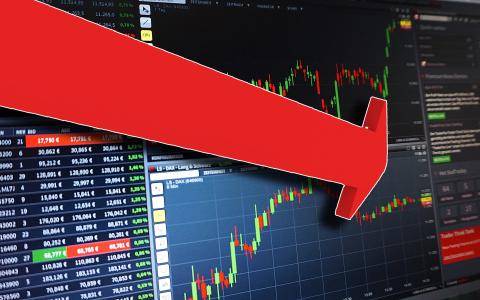
Legendary hedge fund manager Paul Tudor Jones expects U.S. equity markets to retest recent lows, even if trade tensions with China moderate. For RIAs and portfolio managers, his warning underscores the need for cautious asset allocation and increased client communication as volatility remains a dominant theme.
Speaking on CNBC, Jones—founder and CIO of Tudor Investment Corporation—stated that both trade policy uncertainty and restrictive monetary conditions are exerting substantial pressure on equity valuations. In his view, neither variable is likely to reverse course until the market experiences another sharp correction.
“Trump remains committed to tariffs, and the Fed is showing no signs of easing,” Jones said. “That combination creates a hostile environment for equities.”
While the S&P 500 has rebounded from its April lows, Jones believes a renewed decline is likely, projecting a potential 10% drop from current levels. Such a move would place the index around 4,982, testing technical support levels and potentially prompting a policy response.
Tariffs Continue to Weigh on Sentiment
Jones emphasized that market participants are pricing in a partial de-escalation in the U.S.-China trade conflict. While President Trump has floated the possibility of imposing tariffs as high as 145% on Chinese imports, Jones believes investors are assuming a more moderate 50% tariff scenario. However, even this adjusted expectation would function as the equivalent of the largest tax increase on U.S. consumers in over half a century.
“The economic impact of that level of tariffs could shave 2 to 3 percentage points off GDP,” Jones warned.
Such a drag on growth would materially affect corporate earnings and consumer spending—both of which are central to the equity market’s long-term trajectory.
Fed Policy: No Relief Yet
Jones also criticized the Federal Reserve’s current stance, noting that interest rates remain elevated relative to prevailing economic conditions. According to CME FedWatch data, markets expect the Fed to hold rates steady at this week’s FOMC meeting, despite growing evidence of softening economic momentum.
“The Fed is not moving,” Jones said. “Until we see a capitulation—either by Trump pulling back tariffs or the Fed turning dovish—the path of least resistance for equities is down.”
That view puts him at odds with more optimistic forecasts suggesting that the worst of the equity market downturn has passed.
Broader Market Outlook: Uncertainty Prevails
Other institutional voices are expressing similarly cautious views. In a recent strategy note, Wells Fargo’s senior global market strategist Scott Wren acknowledged the ongoing debate among investors about whether stocks have reached a durable bottom.
“As much as we’d like to declare the bottom is in, we just can’t,” Wren wrote. “Tariff policy and global growth concerns remain the dominant forces, and we expect other headwinds to emerge in the months ahead.”
Wells Fargo, like Jones, believes there is a realistic chance the S&P 500 could retest its April lows, depending on how trade developments evolve and whether economic data begins to weaken more broadly.
HSBC echoed that sentiment in its own update, noting that while recent economic data has surprised to the upside, those results were likely distorted by frontloaded activity ahead of tariff increases. The firm maintains a “tactically cautious” stance on risk assets.
“Forward-looking indicators suggest that the positive momentum in hard data may fade soon—possibly within the next month or two,” HSBC strategists wrote.
Implications for Advisors
For wealth managers and RIAs, the current macro landscape reinforces the importance of maintaining diversified portfolios and stress-testing client plans under a range of downside scenarios. Jones’s outlook aligns with a broader reassessment of equity risk premiums in an environment where monetary support is constrained, and fiscal headwinds are mounting.
While equity markets have shown resilience in the face of past policy shocks, Jones’s assertion is that this time, the combination of restrictive trade policy and a neutral-to-hawkish Fed may limit the market’s ability to sustain a rally without external catalysts.
“Unless there’s a significant decline that forces policymakers to act, I don’t see a path higher from here,” Jones concluded.
For RIAs, the messaging to clients may need to shift from riding out volatility to proactively managing exposure, particularly in sectors and asset classes most sensitive to policy risk. In addition, this may be a timely opportunity to revisit defensive allocations, quality factor tilts, and potential hedging strategies.
Conclusion
As geopolitical tensions and monetary policy inertia collide, advisors must navigate a market environment where downside risk remains elevated. Paul Tudor Jones’s warning is not just a forecast—it’s a call to action for advisors to reassess positioning, reevaluate risk tolerance, and prepare for a potentially more volatile second half of the year.
The market, in Jones’s view, is in a holding pattern that will only break with significant movement—either downward enough to trigger policy shifts or upward on the back of unexpectedly accommodative decisions. Until then, RIAs may be best served by emphasizing portfolio resilience, tax efficiency, and strategic liquidity over tactical risk-taking.



